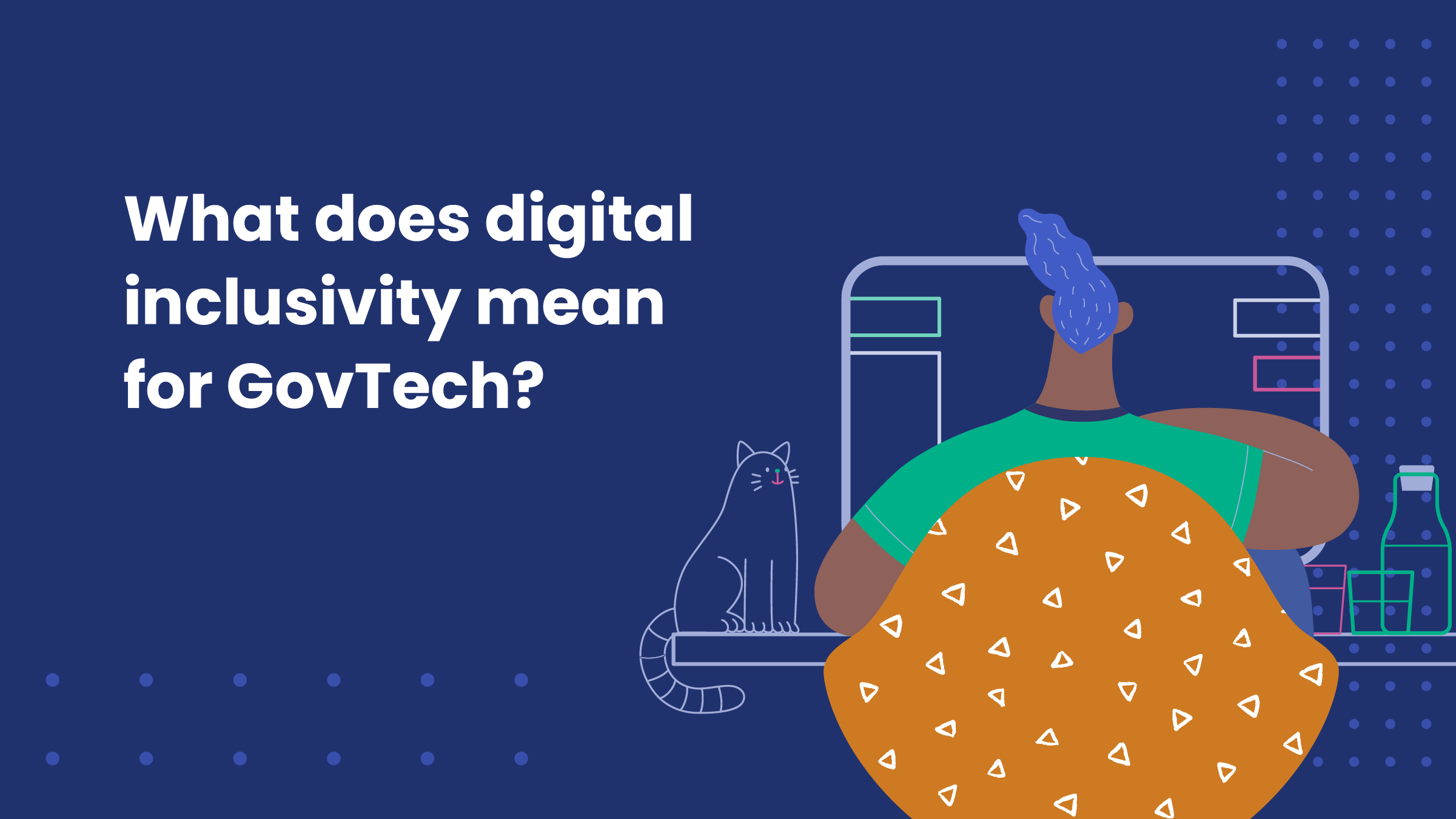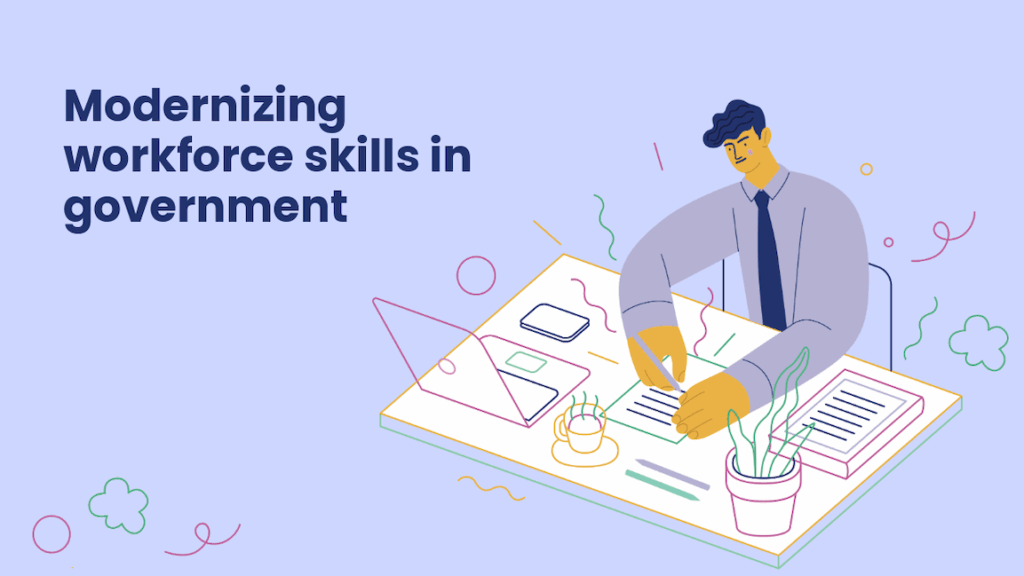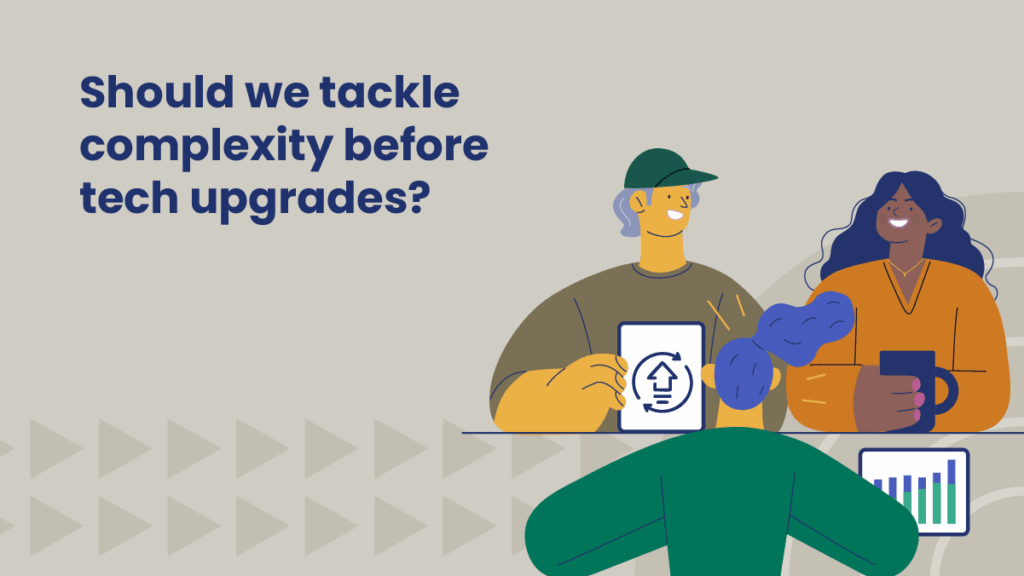Web accessibility: What does digital inclusivity mean for GovTech?

Approximately 15% of the world’s population has a disability, according to The World Bank Group — meaning roughly 1 billion people worldwide may be affected by web accessibility or, rather, inaccessibility.
So what does this mean for government technology?
Digital government that works for everyone
For residents with disabilities, there are often challenges when it comes to accessing government services. While offering services digitally may improve access for many, a distinct set of challenges starts to pop up. Barriers like lack of video captions, poor color contrast, lack of alt text for images, and complex navigation hinder digital inclusion. However, intentional design and supportive features can absolutely help overcome these obstacles.
As government agencies embrace modernization, they must continue to strive to accommodate residents with all different types of disabilities: visual, cognitive, learning, auditory, physical, and speech. Agencies should be aware of (and ready to rectify) digital barriers as more services move to an online domain. An accessible digital environment conforms to the Web Content Accessibility Guidelines (WCAG).
Web accessibility standards
The Web Content Accessibility Guidelines (WCAG) are technical guidelines for creating an inclusive online environment. While WCAG is not legislation, it is considered the global standard for web accessibility. Most digital entities conform to some level and version of WCAG.
When an agency conforms to WCAG, it automatically aligns with standards of accessibility legislation, including the Americans with Disabilities Act (ADA), Section 508 of the Rehabilitation Act of 1973, and Accessibility for Ontarians with Disabilities Act (AODA) to list a few.
Conforming to WCAG implies that a digital entity follows its four principles: perceivable, operable, understandable, and robust. While there are precise instructions under each overarching category, the four summarizing principles act as a guide for accessible website creation.
What exactly does it mean for a digital entity to be perceivable, operable, understandable, and robust?
- A perceivable website’s information is displayed in a way that all residents can perceive and be aware of — i.e., information is “perceivable” through sight, touch, and hearing.
- On an operable website, a resident should have the ability to access all website functions and use them without disruption. Being operable means connecting with keyboards, voice control, and other assistive technology.
- To be understandable, all website content must be easily understood by residents. Understandable information is simple; it’s information that is easy to comprehend.
- A robust website’s content must be readily interpreted by a wide variety of residents with diverse needs. Robust digital entities work across different technologies, browsers, and mobile devices.
Assessing web accessibility
There are some key nuances to assessing the web accessibility of digital government platforms such as the level and version of WCAG compliance. Government agencies should aim to conform to WCAG version 2.1 and Level AA.
- WCAG version 2.1 (2018) is the most recent version of WCAG. Versions build on each other with updates as needed, so conforming to the most recent version is conformance to all versions.
- Level AA is the most common level. Though it’s considered to be the midrange level, it is the most recommended as the highest level (Level AAA) is often not applicable for digital government uses.
PayIt is working to conform to WCAG version 2.1 and Level AA. This information is often specified on an agency’s accessibility web page or its accessibility statement.
Additional digital accessibility considerations
Along with your main website, digital accessibility should be considered in other content that the agency is producing. Here are some of the most common examples.
- Social media requires special features like alternative text for images, choosing an appropriate text font, adding closed captions or subtitles for videos, including a warning for people with photosensitivity, and using emojis in moderation.
- Similar to social media, PDFs require additional elements for inclusivity. Features include being mindful of font color, creating high-contrast captions, avoiding packing a graphic with text, and creating visuals with high contrast.
- Webinars must have closed captions or subtitles, and any presentation displayed on the webinar must follow accessibility guidelines required by social media, PDFs, and more.
Agencies must consider all attributes of their digital presence to be digitally accessible. As more government services go digital, accessibility standards should be a key part of the conversation.
Looking for more content?
Get articles and insights from our monthly newsletter.




